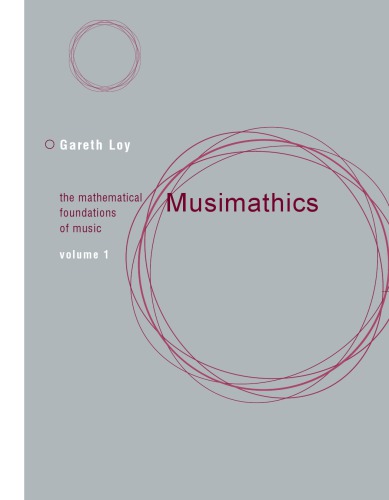

Most ebook files are in PDF format, so you can easily read them using various software such as Foxit Reader or directly on the Google Chrome browser.
Some ebook files are released by publishers in other formats such as .awz, .mobi, .epub, .fb2, etc. You may need to install specific software to read these formats on mobile/PC, such as Calibre.
Please read the tutorial at this link. https://ebooknice.com/page/post?id=faq
We offer FREE conversion to the popular formats you request; however, this may take some time. Therefore, right after payment, please email us, and we will try to provide the service as quickly as possible.
For some exceptional file formats or broken links (if any), please refrain from opening any disputes. Instead, email us first, and we will try to assist within a maximum of 6 hours.
EbookNice Team

Status:
Available4.7
24 reviews"Mathematics can be as effortless as humming a tune, if you know the tune," writes Gareth Loy. In Musimathics, Loy teaches us the tune, providing a friendly and spirited tour of the mathematics of musica commonsense, self-contained introduction for the nonspecialist reader. It is designed for musicians who find their art increasingly mediated by technology, and for anyone who is interested in the intersection of art and science.
In this volume, Loy presents the materials of music (notes, intervals, and scales); the physical properties of music (frequency, amplitude, duration, and timbre); the perception of music and sound (how we hear); and music composition. Musimathics is carefully structured so that new topics depend strictly on topics already presented, carrying the reader progressively from basic subjects to more advanced ones. Cross-references point to related topics and an extensive glossary defines commonly used terms. The book explains the mathematics and physics of music for the reader whose mathematics may not have gone beyond the early undergraduate level. Calling himself "a composer seduced into mathematics," Loy provides answers to foundational questions about the mathematics of music accessibly yet rigorously. The topics are all subjects that contemporary composers, musicians, and musical engineers have found to be important. The examples given are all practical problems in music and audio. The level of scholarship and the pedagogical approach also make Musimathics ideal for classroom use. Additional material can be found at a companion web site.